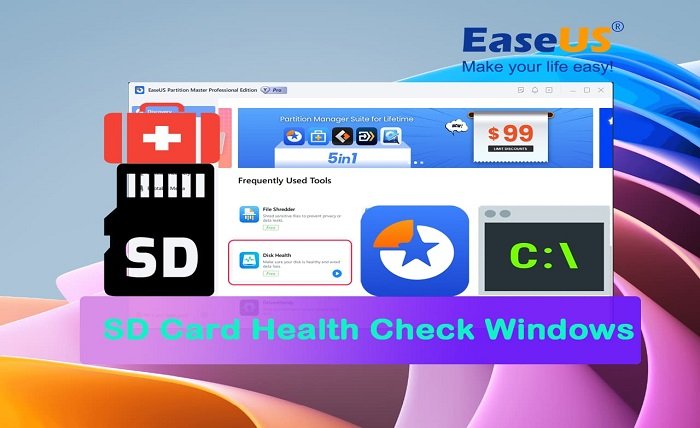Ensuring Longevity: The Ultimate Guide to SD Card Health Check on Windows

Introduction
In the digital age, SD cards are indispensable for data storage across devices like cameras, smartphones, and tablets. Conducting regular health checks on these cards, especially using Windows, ensures data integrity and optimal performance. This detailed guide will explore how to perform an “SD card health check on Windows,” using various tools and techniques to help you maintain your SD card’s health effectively.
SD Card Health
Before diving into the technicalities of checking an SD card’s health on Windows, it’s important to understand what factors influence the health of an SD card. This section discusses the lifespan, wear and tear, and signs of a failing SD card, setting the stage for the necessity of regular health checks.
Tools Required for SD Card Health Check
Several tools are available for conducting an SD card health check on Windows. This part of the blog introduces popular tools like the Windows built-in utilities and third-party software, detailing their features and how they can help monitor and repair SD card issues.
How to Access Your SD Card on Windows
For new users, accessing an SD card on Windows may seem daunting. Here, we provide a straightforward guide on how to connect and access your SD card, ensuring it is properly recognized by your Windows computer before performing any health checks.
Using Windows Explorer to Check SD Card Health
Windows Explorer offers basic tools that can help you check the health of your SD card. This section explains how to use Windows Explorer to identify visible signs of corruption or errors and the initial steps to take for maintenance.
Using Windows Disk Management for a Detailed Analysis
Windows Disk Management is a more detailed tool for managing all storage devices connected to your computer, including SD cards. Learn how to navigate Disk Management to perform health checks and troubleshoot common SD card issues.
Third-Party Tools for Comprehensive SD Card Health Checks
For those who require more comprehensive diagnostics, third-party tools can provide in-depth analyses of SD card health. This segment reviews several reputable tools, discussing their advantages in diagnosing and resolving SD card health issues.
Checking SD Card Errors Using Windows CHKDSK
The Windows CHKDSK utility is a powerful tool for fixing file system errors on storage devices. This part of the blog guides you through using CHKDSK to scan and repair your SD card, a crucial step in any health check routine.
How to Format and Restore SD Card Health
Sometimes, the best way to restore an SD card’s health is to format it. This section offers a detailed, step-by-step guide on how to safely format your SD card using Windows, ensuring you don’t lose important data.
Preventive Measures to Extend SD Card Life
Preventive maintenance can significantly extend the life of your SD card. This portion provides tips on how to handle, store, and use your SD card to minimize wear and tear, as well as software settings that can reduce the risk of corruption.
Automating SD Card Health Checks
Automating the process of checking your SD card’s health can save time and prevent problems before they start. Learn about software that can automate these checks and how to set them up on your Windows machine.
Troubleshooting Common SD Card Issues
Encountering issues during your SD card health check on Windows? This section addresses common problems and provides effective troubleshooting steps to help you resolve them quickly.
Conclusion
Regular health checks are crucial for maintaining the performance and longevity of your SD card. By utilizing the Windows tools and third-party software discussed in this guide, you can ensure that your SD card remains reliable for storing valuable data. Remember, taking proactive steps in maintaining your SD card can save you from data loss and frequent replacements.
FAQs
- How often should I perform an SD card health check on Windows?
- Conduct a health check at least once every three months or more frequently if you frequently use the card for intensive data storage.
- What are the signs that my SD card is failing?
- Slow data transfer speeds, frequent error messages, files not saving properly, or data corruption are common signs.
- Can I recover data from a failing SD card?
- Yes, you can use data recovery software to attempt to recover files from a failing SD card, but success is not guaranteed.
- Does formatting an SD card fix all its problems?
- Formatting can resolve issues related to file corruption and can restore the card to a functional state, but it does not fix physical damage.
- How can I extend the lifespan of my SD card?
- Avoid exposing your SD card to extreme temperatures, eject it safely from devices, and store it in a protective case to extend its lifespan.




